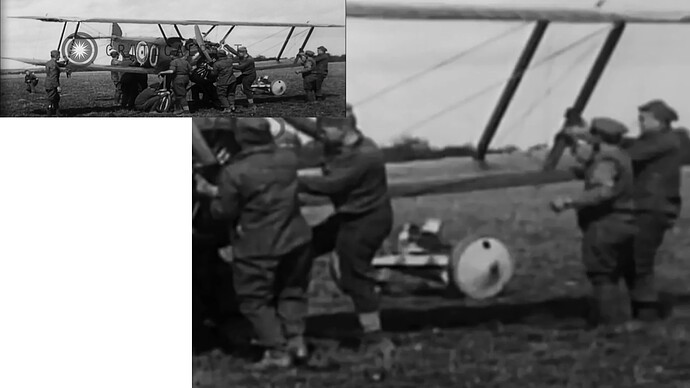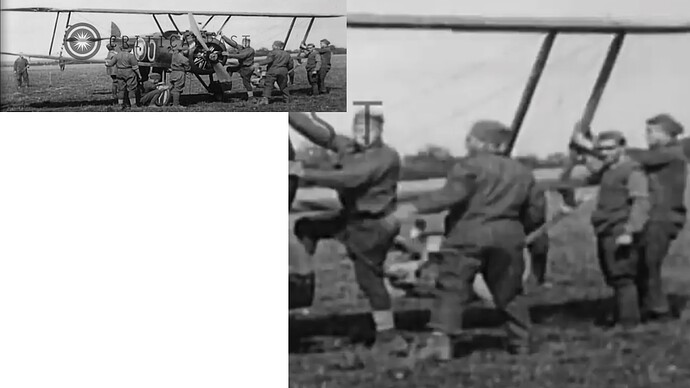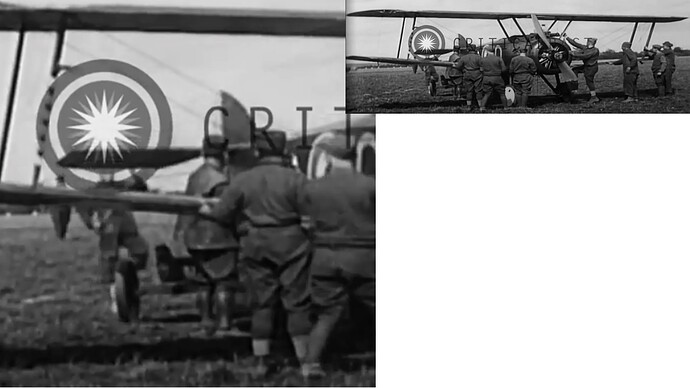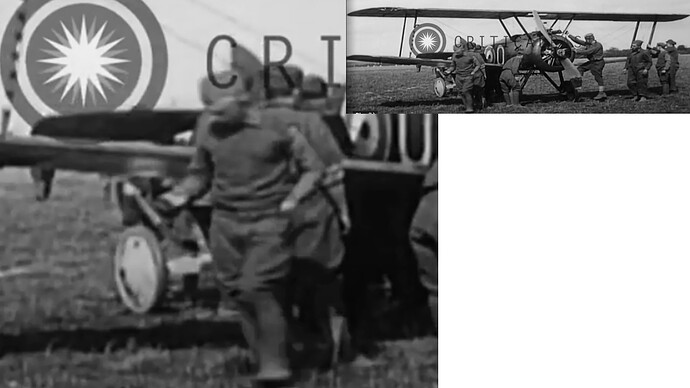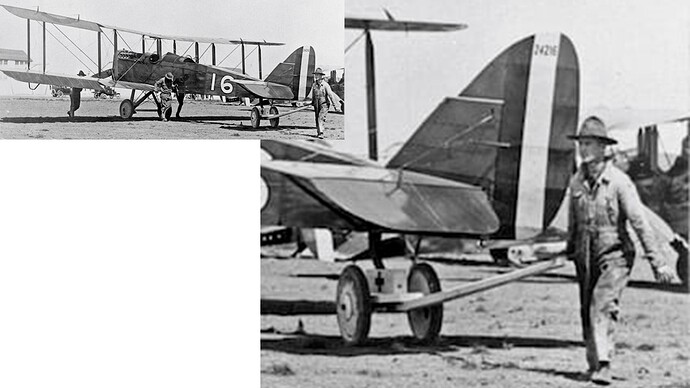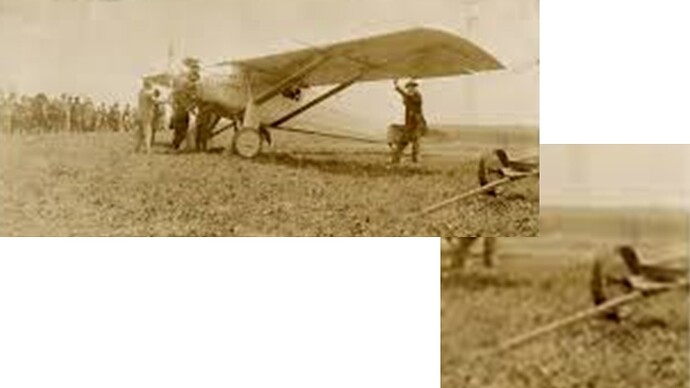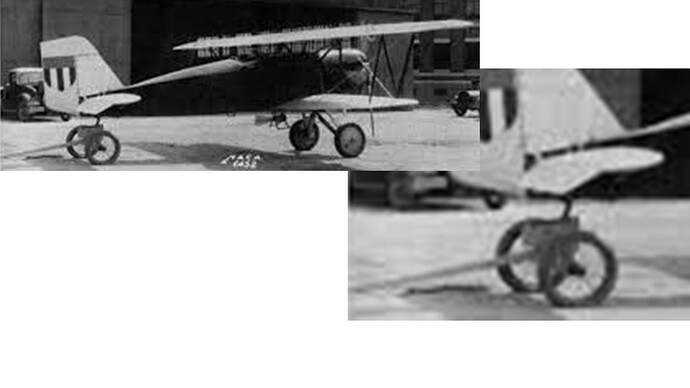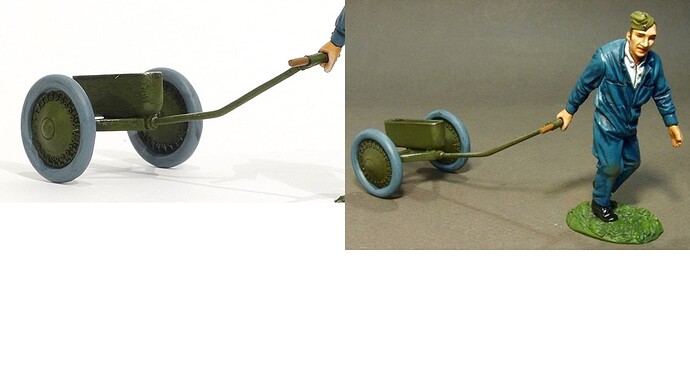So, some information on the tailskid dolly. As far as I can tell, there was no such thing as a “standard” design for these things. It would appear that the mechanics and ground crew pretty much just fabricated the dollies from whatever materials were handy and available.
Many of them appear to use spare (perhaps slightly damaged) landing gear wheels, with or without covers. Most (but not all) appear to have buckets for the tailskids that pivoted independently of the dolly. This makes sense for maneuverability because the tailskids generally did not have much range of movement (and none on some aircraft).
The dollies used by the 148th Aero Squadron (the unit of the subject Camel model) appeared to have painted their dollies in the colors used by each of the three different flights (A = red; B = white; C = blue), so I’ll paint mine in white for Lt. E.W. Springs’ B Flight.
The first four photos here are screen grabs take from some film shot by US Army Signal Corps photographers of the 148th Aero Squadron pilots and plans. These grabs actually show Springs’ Camel “O” after he tipped it over on its nose during a landing.
The rest of these stills show some of the variety in dolly designs and materials. It’s not really clear if this first one has a pivoting tailskid bucket. Note the the bucket seems to be in line with the handle and the tailskid and rudder are slightly turned to follow.
This one is interesting. The wheels used on the dolly look like metal farm wagon or tractor wheels.
This last collage shows the only 1/32 scale tailskid dolly that I could find as a separately sold accessory. It comes with the figure, and both are pre-painted. There are a few tailskid dollies included as accessories in kits, but none of these are 1/32. However, building one is a simple project, and the designs are so varied that there’s really no right or wrong.
